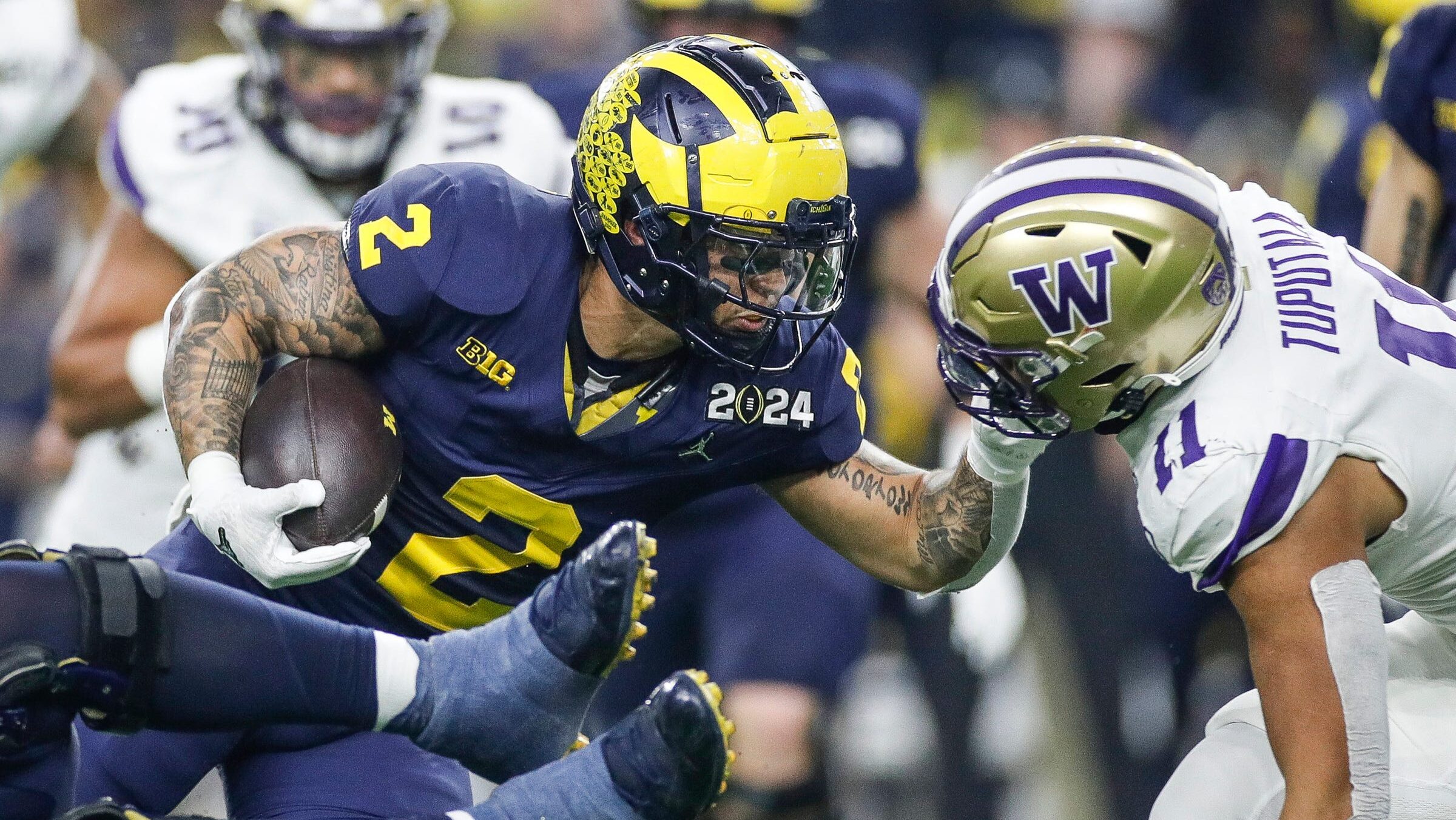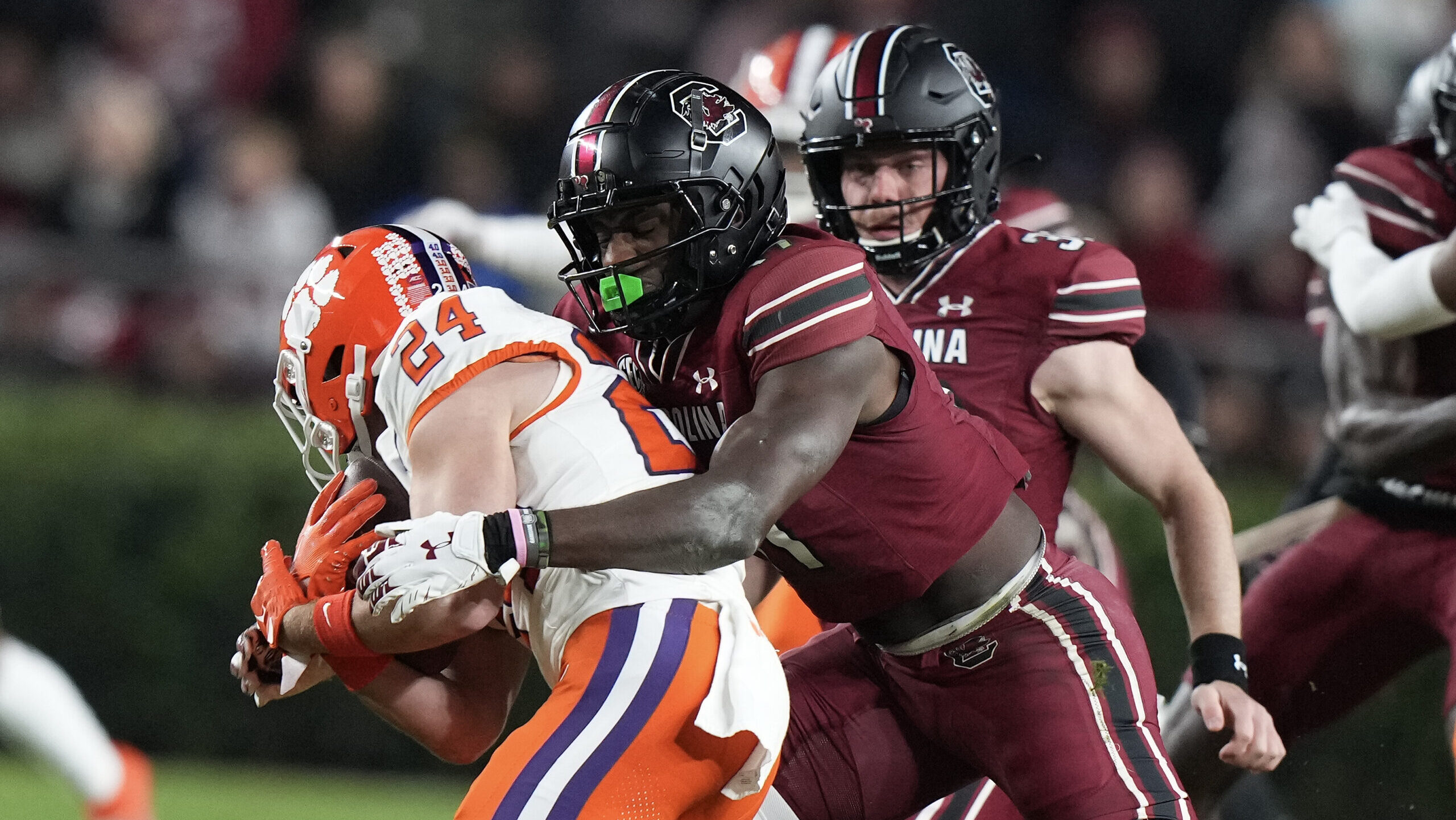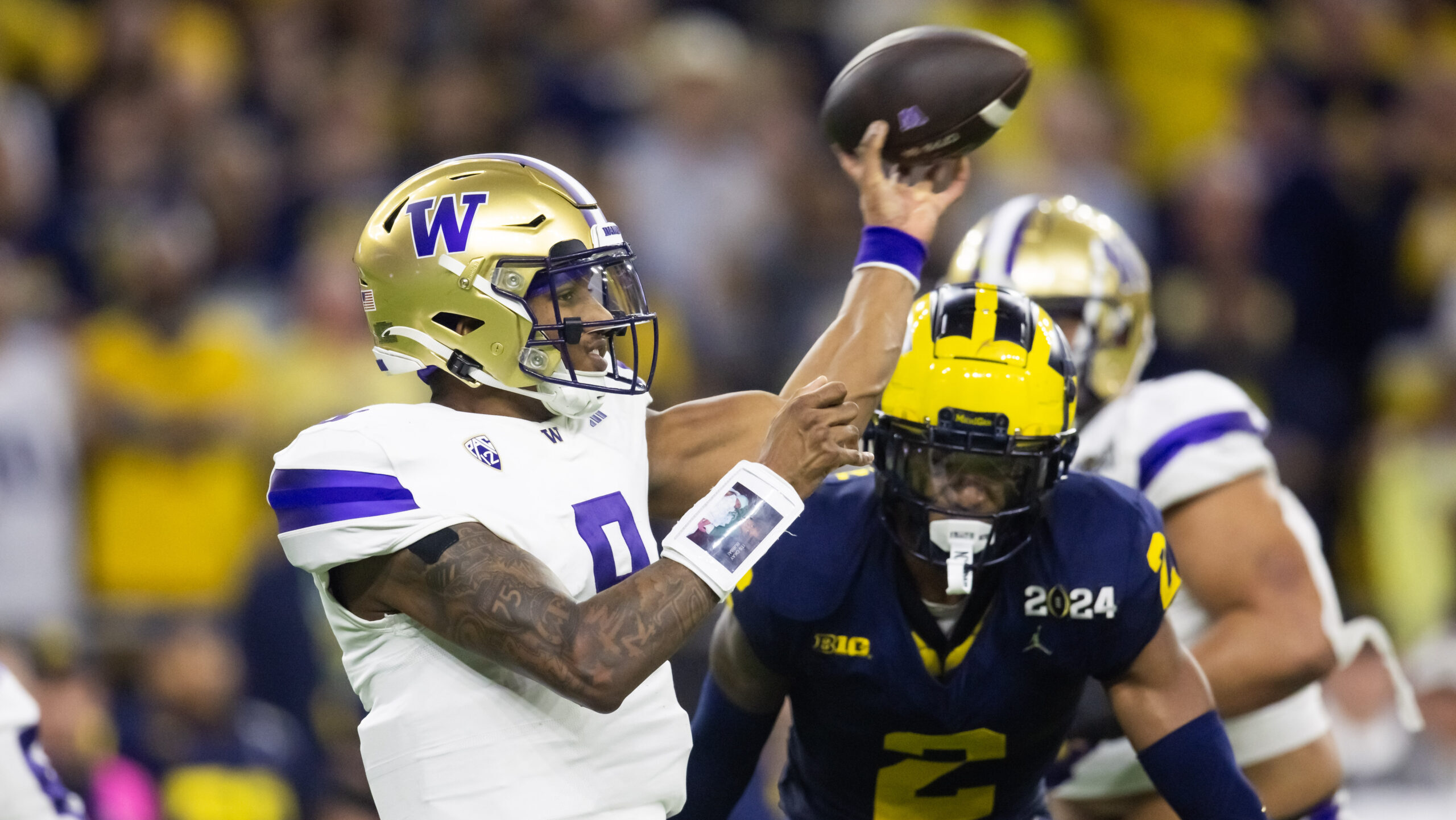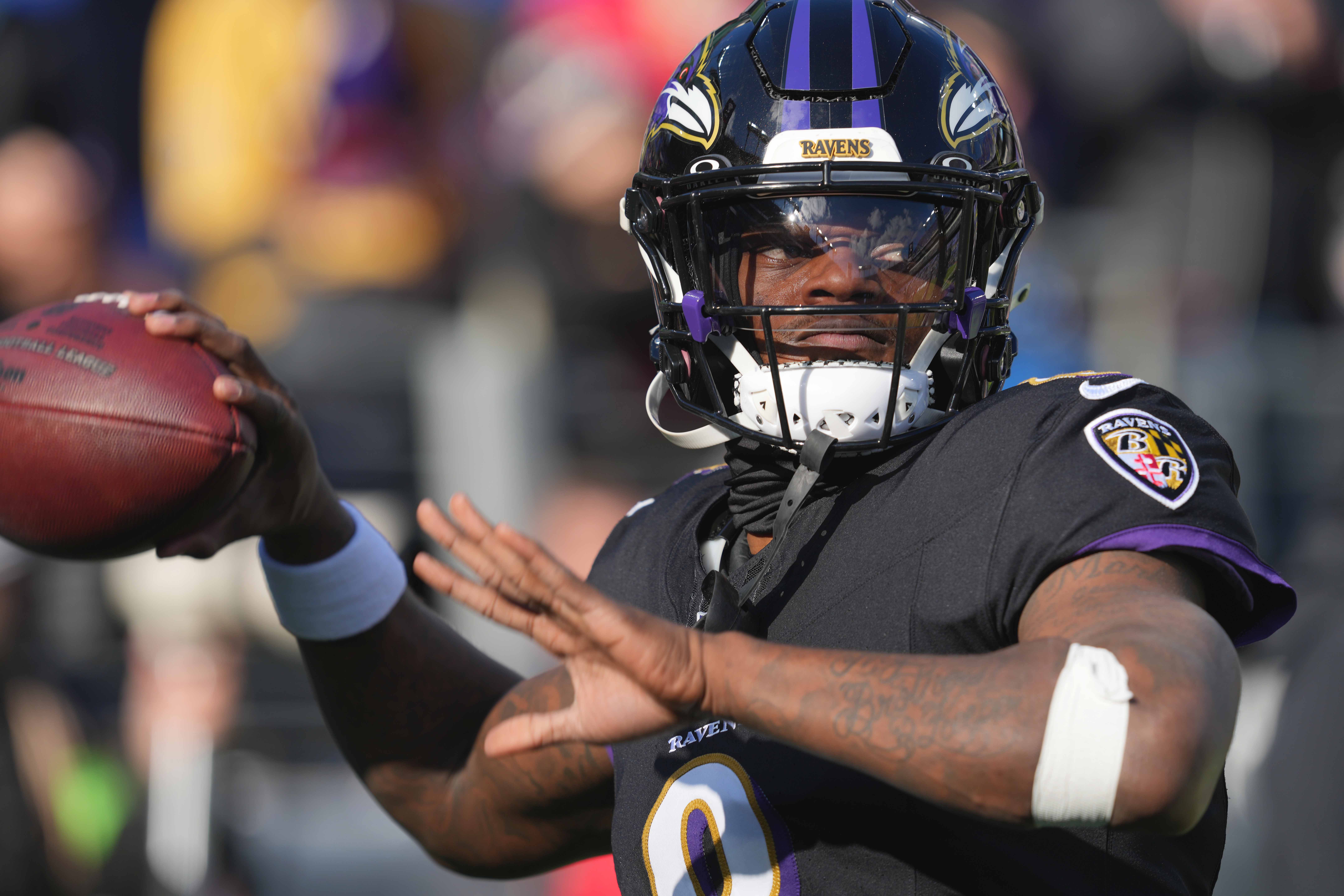Analysis
6/12/23
5 min read
What is Quentin Johnston's Dynasty Fantasy Football Value?
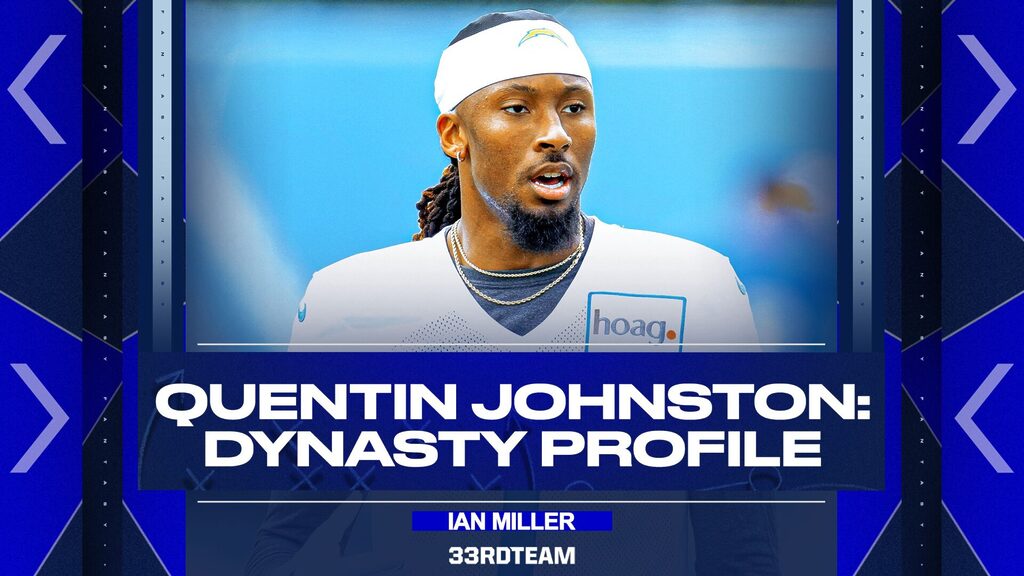
Quentin Johnston was the second wide receiver to come off the board in April's 2023 NFL Draft. The former TCU standout went one pick after Jaxon Smith-Njigba. How will Johnston fare in the Los Angeles Chargers' Justin Herbert-guided offense?
Ian Miller breaks down Johnston's value in Dynasty fantasy football by examining his production profile, athletic profile, draft profile and other variables to capture his range of outcomes as a fantasy player.
Johnston's Dynasty Value
College Clues
Johnston was a four-star Hopeful Recruit, the second-highest hit rate designation for high school recruits after Promising Recruits. He entered TCU without many expectations. That's not uncommon. All of the 18-year-old Hopeful Recruits since 2003 who have played more than five games averaged fewer than 8.0 PPG. However, Johnston’s 11.9 PPG stood out, and he accomplished it on a team that threw fewer than 28 times per game.
How did Johnston score so well in a low-volume passing offense? He put up 2.23 yards per team pass attempt on an 18.8 percent target share. That’s impressive for an 18-year-old freshman, regardless of his recruitment status.
Johnston became the 12th 18-year-old receiver to put up a yards-per-team pass attempt that high. Of the 11 before him, five were first-round draft picks, three were Day 2 picks and three were Day 3 choices.
One of the three final-day selections was Stefon Diggs, whom the Minnesota Vikings drafted in the fifth round (146th overall) in 2015. This was an early and clear indication Johnston was a college prospect to keep an eye on.
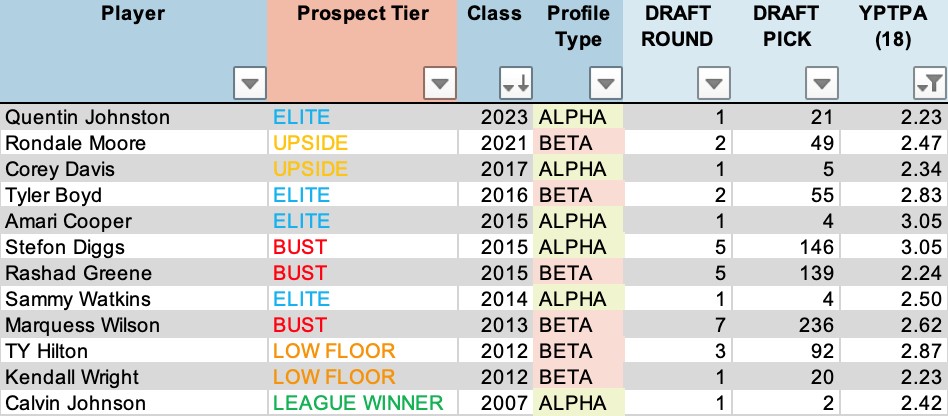
In 2021, Johnston improved as a sophomore. However, his sophomore season was anything but typical. He improved his fantasy PPG to 16.7, his target share to a whopping 29.6 percent and his yards-per-team pass attempt to 3.07. Johnston accomplished that on an average depth of target (aDOT) of 18.7.
Johnston's high target share and yards-per-team made him immensely productive. Johnston also became the 23rd receiver to post a yards-per-team attempt higher than 3.00. He did all of that with an aDOT of more than 15 yards. Of the 20 other receivers who put up a 28 percent target share at 19, none did it on the deep aDOT that Johnston did.
His sophomore season was fantastic. So Johnston's prospect profile, after two seasons, was already considered elite.
Entering his junior season in 2022, he was no longer a prospect to keep an eye on, he was a prospect every team with a first-round pick had its eye on.
Despite not recording more than 50 yards until Week 5, he still built on his sophomore season peripherals. He finished it with his highest yards per route run of his career, even though he was one of college football’s best wide receivers in 2021.
After three seasons, his production profile screamed of someone who should forego his senior season and declare for the draft. He was too good for college football.
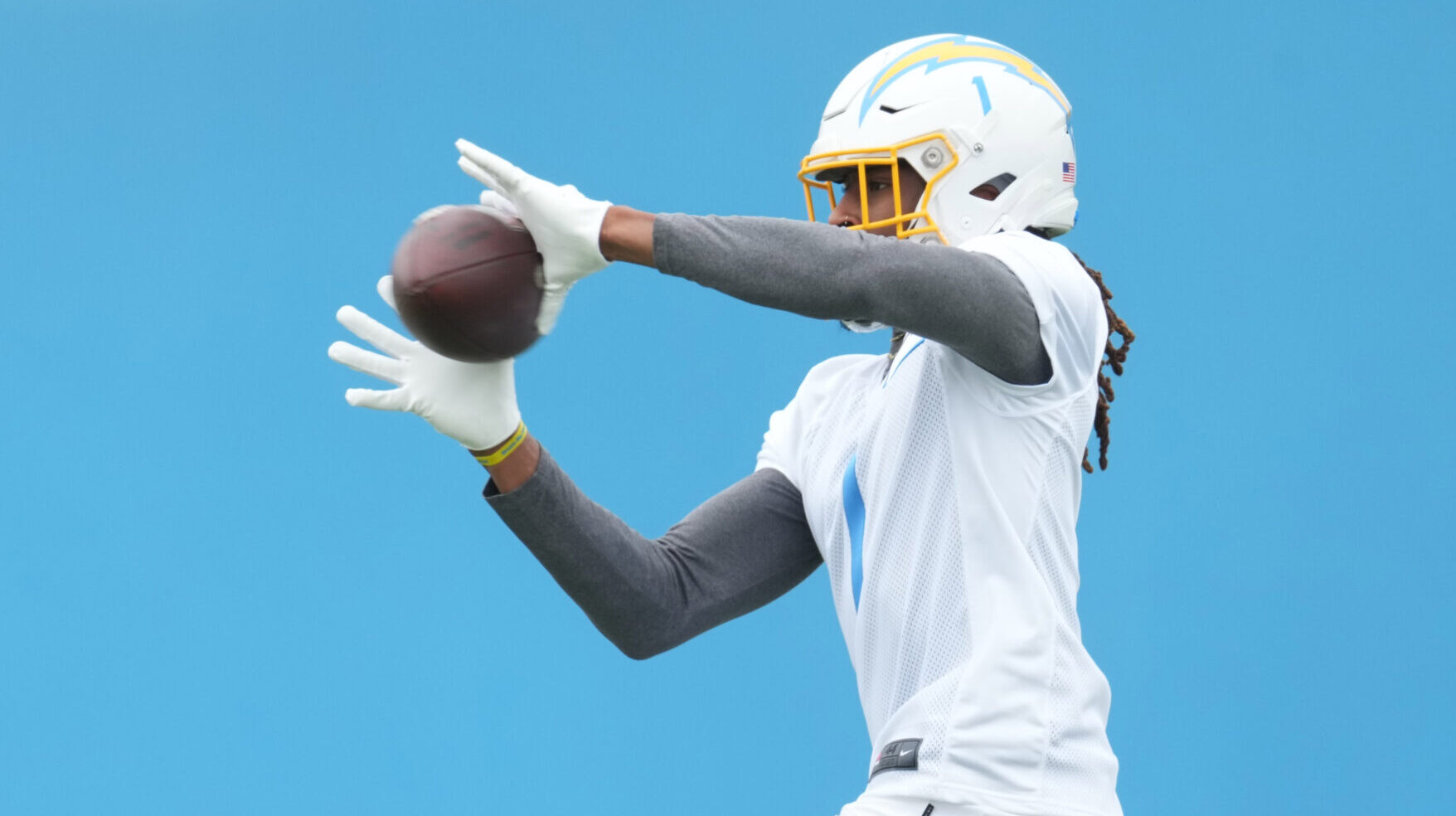
Johnston's Prospect Profile
As an Elite Prospect — whether he became a first- or second-rounder — Johnston was one of just five college receivers to post two yards or more per team attempt in each collegiate season, joining Calvin Johnson, Amari Cooper, CeeDee Lamb and Kenny Britt. Like Johnston, all four also skipped their senior season and declared for the draft.
At the NFL Combine, we were eager to see Johnston's athleticism and whether his height and weight allowed him to be an Alpha- or Beta-sized wide receiver. For those new to our process, the term Alpha stands for those who are 5-foot-11 or taller, 195 pounds or heavier and hold at least a 26.0 BMI.
Before you say that size doesn’t matter, 54 Beta-sized wide receivers have been drafted in the first two rounds since 2006. Only 31.5 percent of them hit a 14+ PPG season.
Compare that to 79 Alphas drafted in the same range, and the hit rate jumps to 49.4 percent. Wide receiver size certainly matters. That’s great for Johnston, who hits Alpha requirements at just under 6-foot-3, 208 pounds. For a cherry on top, his 4.52 40 time, 40.5-inch vertical and 11-foot-2 broad jump resulted in an 8.67 Relative Athletic Score (RAS). That's the 26th-highest score among first-rounders since 2006.
Leading up to the NFL Draft, Johnston’s profile held impressive production, an early declaration for the draft and a strong athletic profile. The only thing missing was actual draft capital. That’s something the Chargers provided by taking him 21st overall. Johnston's prospect profile was now complete, and it was elite.
Range of Outcomes
This is a great prospect profile, but we need to quantify all these variables into a simple range of outcomes. The Johnston prospect bucket is shown below.
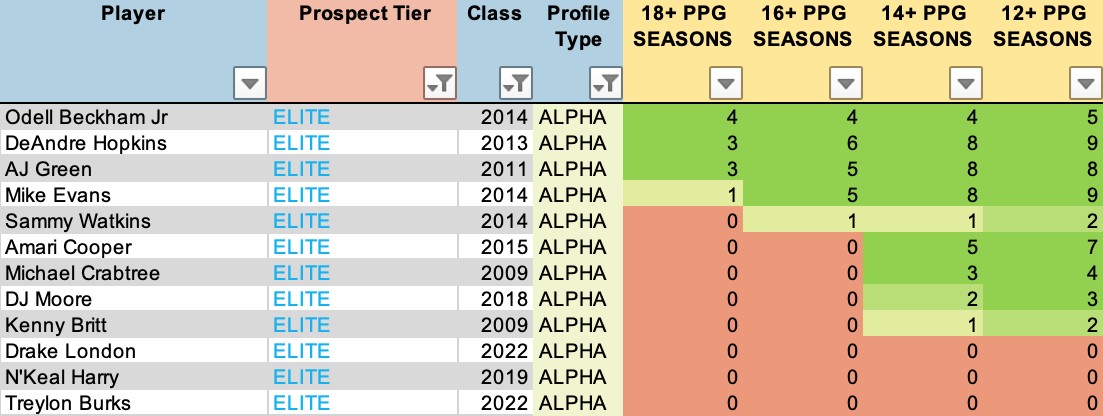
Imagine this prospect profile paired up with one of the league’s best quarterbacks in Herbert. Not just that, but it comes with an offense that throws near league-best passing volume.
Let's take imagining out of it. Six other elite prospects have been drafted to a team that throws more than 36 passes per game. Those six include Odell Beckham Jr., DeAndre Hopkins, Lamb, Tee Higgins, Cooper and JuJu Smith-Schuster. Together they averaged 14.3 PPG as rookies. It makes sense because we have Johnston projected for 14.5 PPG this season in his rookie year.
Don’t let Johnston fall in your drafts; it will likely come back to bite you.
Follow The 33rd Team Podcast Network on Spotify and Apple Podcasts.


